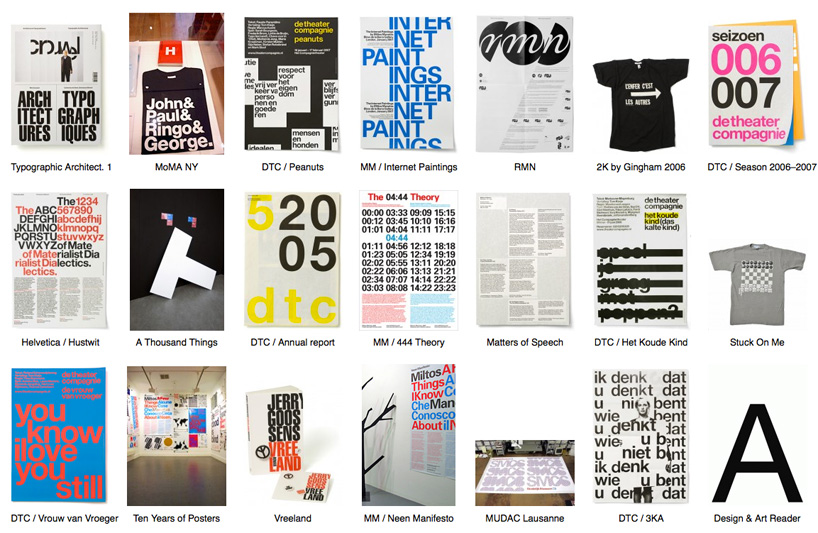For Erwin and Danny the concept of being a graphic design was unknown to them as children, they were interested in putting images and text together, creating small comic books and drawing rockets and robots however they didn't know such a job existed. They put this down to the fact that they didn't have computers, very different to the world we live in today where children have access to the internet from an early age and so know what is on offer to them. However Marieke was slightly more aware of graphic design because her father was a well-known printer in Amsterdam and her uncle is actually a well-known graphic designer, however a young age she didn't dream of becoming one herself.
The studio describe the Whitney rebrand as one of their most satisfying projects to date as it required them to function to full ability - writing, reading, researching, designing for printed matter and signage, as well as working with sound and moving image. Developing the graphic identity for the Whitney was a very strict process, involving dozens of meetings and presentations. The project was very city-specific, very much grounded in the city of New York "in the sense that, during the design process, it became clear to us that the shape of the ‘zigzag’ could refer to things such as the ziggurat-shape of the architecture (of both the current and future building of the whitney), or the iconic fire-escape stairs in the streets of new york, or the zigzag-like path of the whitney museum through manhattan, throughout the years. also, we did a lot of research into the history of the whitney museum, and the history of american modernism in general – the specific moment that europe stopped being the center of modern art, and new york became the new capital. so, in the whitney project as well as in ‘two or three things’, we really tried to explore this notion of ‘city-specificity’."


No comments:
Post a Comment